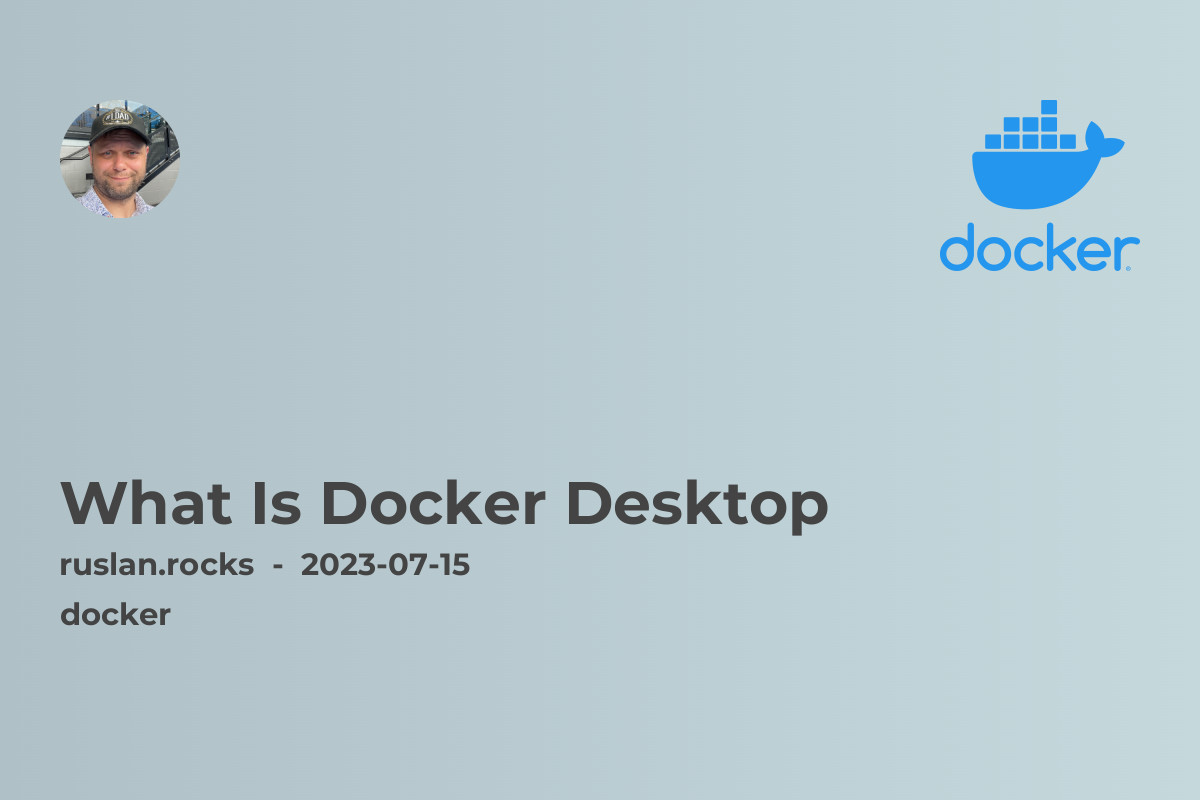- What Is Docker Desktop
- Benefits of Docker Desktop
- Getting Started with Docker Desktop
- Related Articles
What Is Docker Desktop

Docker Desktop is an application for creating and managing Docker containers on your computer. It allows you to package your applications into containers, which can then be run on any system that has Docker installed. With Docker Desktop, developers can easily develop, test, and deploy their applications in a consistent and reproducible manner.
Benefits of Docker Desktop
Docker Desktop offers several benefits for developers and organizations:
-
Portability: Docker containers provide a consistent runtime environment, making it easy to move applications across different systems and environments. This portability eliminates the "it works on my machine" problem often encountered when deploying applications.
-
Efficiency: Docker Desktop enables the use of containerization, which allows for efficient resource utilization. Containers share the host operating system's kernel, reducing the overhead associated with traditional virtualization technologies.
-
Scalability: Docker Desktop facilitates the scaling of applications by allowing developers to define the number of instances of a container to run. This makes it easy to scale up or down depending on demand, improving application performance and responsiveness.
-
Isolation: Docker containers provide isolation between applications and the underlying host system. This isolation prevents applications from interfering with each other, increasing the overall security and stability of the system.
Getting Started with Docker Desktop
To start using Docker Desktop, follow these steps:
-
Install Docker Desktop: Download and install Docker Desktop from the official Docker website. The installation process may vary depending on your operating system.
-
Verify Installation: After installation, open a terminal or command prompt and run the command
docker --versionto verify that Docker is installed correctly. -
Pull a Docker Image: Docker images are the building blocks of containers. You can pull pre-built Docker images from the Docker Hub registry or create your own. To pull an image, use the command
docker pull <image-name>. -
Run a Docker Container: Once you have an image, you can run it as a container using the
docker runcommand. For example, to run an Ubuntu container, use the commanddocker run -it ubuntu. -
Manage Containers: Docker Desktop provides a user-friendly interface for managing containers. You can start, stop, and restart containers, as well as view their logs and resource usage.
Related Articles
To learn more about Docker and related topics, check out these articles:
- What Is Docker: Provides an introduction to Docker and its benefits.
- Introduction To Containerization: Explores the concept of containerization and its advantages.
- Managing Microservices With Docker Swarm And Kubernetes: Discusses the use of Docker Swarm and Kubernetes for managing microservices.
- Docker Vs Kubernetes: Compares Docker and Kubernetes as container orchestration platforms.
- Advantages And Disadvantages Of Container Orchestration: Explores the pros and cons of container orchestration.
By leveraging Docker Desktop and its ecosystem, developers can streamline their application development and deployment processes. Docker containers provide a consistent and reliable environment, enabling developers to focus on building and delivering high-quality software. So, if you haven't explored Docker Desktop yet, it's time to give it a try and experience the benefits of containerization for yourself.
